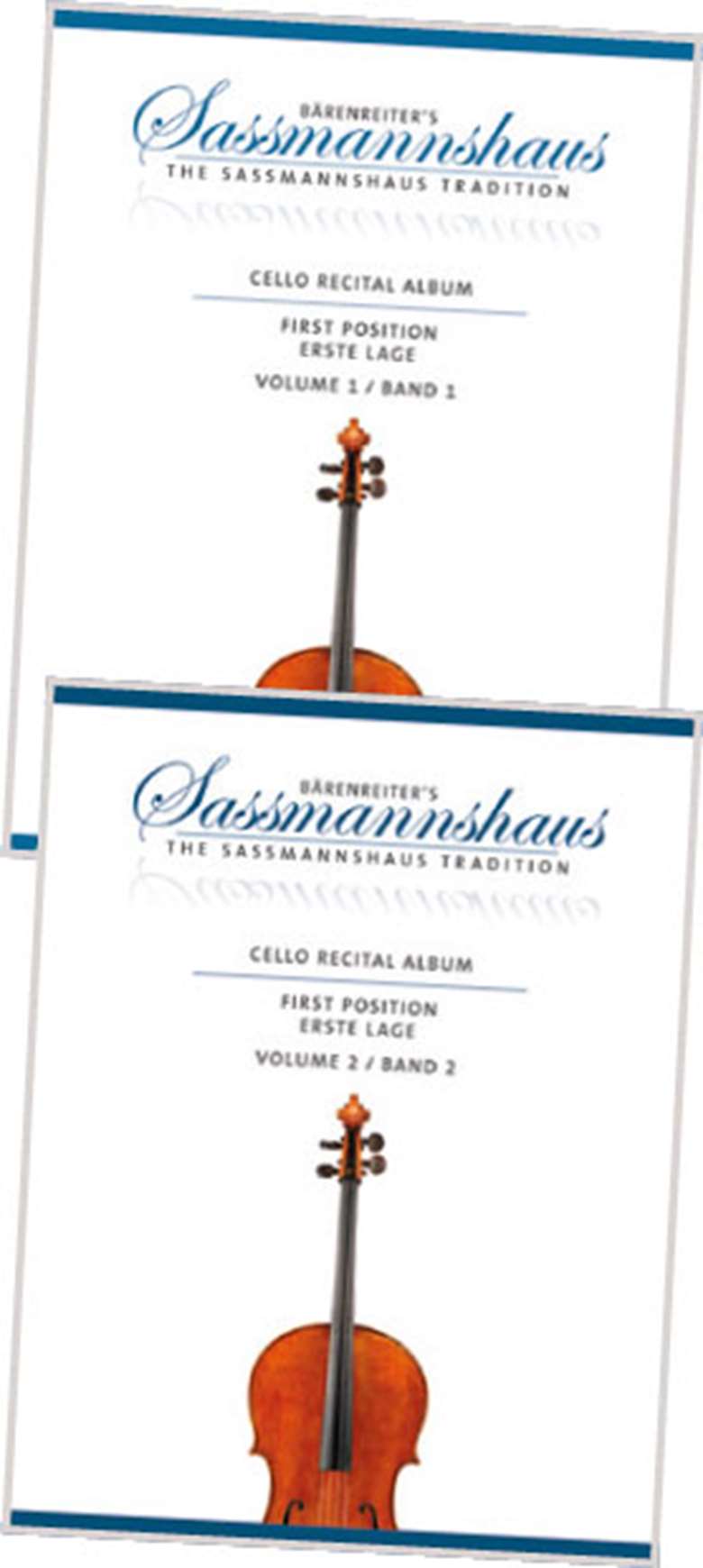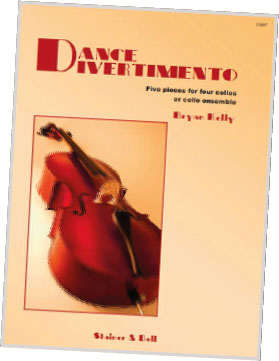Cello Sheet Music Reviews: March 2018
Helen Nielson
Thursday, March 1, 2018
Helen Nielson reviews Cello Recital Albums: Volumes 1 and 2 by Christoph Sassmannshaus, published by Bärenreiter, and Dance Divertimento: Five pieces for four cellos or cello ensembles by Bryan Kelly published by Stainer & Bell.

Cello Recital Albums: Volumes 1 and 2
I strongly believe that children should have a high-quality musical experience right from their first lesson. From the very beginning of their studies, they should be introduced to ensemble playing in the form of accompaniment by the teacher – be it on the cello, on the piano, or with an accompaniment track of some sort. These volumes are an excellent example of high-quality ensemble repertoire for young students and their teachers, which can be used from the earliest stages on their musical journeys. They are full of exciting pieces which are fun to play.
The books are very well-presented with clear printing, making them easy to read for the young student. They are presented with something which we see all too rarely in educational publications – two accompaniment books, one for the cello and one for the piano. This instantly widens the audience of users, as some teachers may not play the piano. It also leaves the option open for those who do switch between the two, which immediately offers the student two different types of ensemble experience.
Sassmannshaus, in his introduction, quite rightly states that ‘this early introduction to chamber music brings joy and satisfaction to the young cellist, teaches rhythmic discipline, and offers the student a more complete harmonic understanding’.
Volume 1 begins with simple open-string pieces such as ‘Hunting Song’ and ‘The Little Bugler’. It then moves through a well-developed progression of pieces using fingers in first position, initially on the D and A strings, then moving to the G string, and later to the C string. These include simple folk-song arrangements and original pieces by a variety of composers, arranged by Sassmannshaus when required. The titles are appealing to children, including ‘Jumping Beans’ and ‘March of the Little Soldiers’. ‘The Robin's Lullaby’ is an excellent introduction to the low sounds of the C string, which is always an exciting moment for children when they approach it in a piece of substance for the first time.
My personal favourite is an absolute gem called ‘Russian Song Without Words’ by German cellist Wilhelm Fitzenhagen. Fitzenhagen taught at the Moscow Conservatory and became the premier teacher in Russia in his short lifetime. He was a close friend of Tchaikovsky, and may be best known for being the dedicatee of his ‘Variations on a Rococo Theme’. Fitzenhagen wrote numerous compositions in his own right, including many for young cellists. This beautiful piece instantly evokes what we want our young cellists to aspire to in the Russian sound and tradition, with an accompaniment offering depth and intensity, while the cellist uses only four notes on the A string. A huge range of expression is encouraged within these pieces with such simple, but clever, writing.
Dance Divertimento: Five pieces for four cellos or cello ensembles

Bryan Kelly is a British composer who has given us various interesting pieces of cello ensemble repertoire, including his ‘Three Spanish Pieces’ and the ‘Umbrian Variations for eight cellos’. Due to his extensive experience of working with young musicians, he has an ability to write well for groups that include intermediate-level students working alongside more advanced students. These pieces offer flexibility, as they could equally be used as teaching materials, or on the concert platform by fully-fledged cellists. In all movements, the first cello requires an advanced player. The lower parts are accessible to cellists of an intermediate level. They are dedicated to Naomi Butterworth, a well-respected teacher of generations of cellists, whom one could easily imagine playing the colourful first-cello melodies.
The range of dance movements provide fun pieces of new music in a popular classical style, which are engaging and enjoyable to play. The ‘Mazurka’ has a convincing melodic line with some colourful chromatic twists, with a simple block chordal accompaniment. The ‘Grand Waltz’ has a grandiose Old-World style waltz melody, reminiscent of the Viennese salons. There are also some moments of melodic interest in the lower parts here, and use of simple dialogue. The simple, pleasing ‘Ragtime’ is pizzicato throughout, with a straightforward accompaniment. The stately ‘Sarabande’ offers a singing, melodic line in the first cello part, while the sostenuto accompaniment encourages resonance and attention to accurate tuning of the harmonically colourful chords. The lively, rhythmic ‘Fandango’ finale offers some slightly more challenging moments in the lower parts, particularly in cello two. There is a good use of harmonic colours in the more expansive middle section. Tremolando chords lead us through to the final gesture.
These are effective, fun and engaging short pieces. They would work well in situations when playing through repertoire in a short space of time. The lower parts may not be challenging enough to engage more advanced players when working over a longer period of time. They may work better as standalone movements, rather than as a cohesive whole in concert situations.

